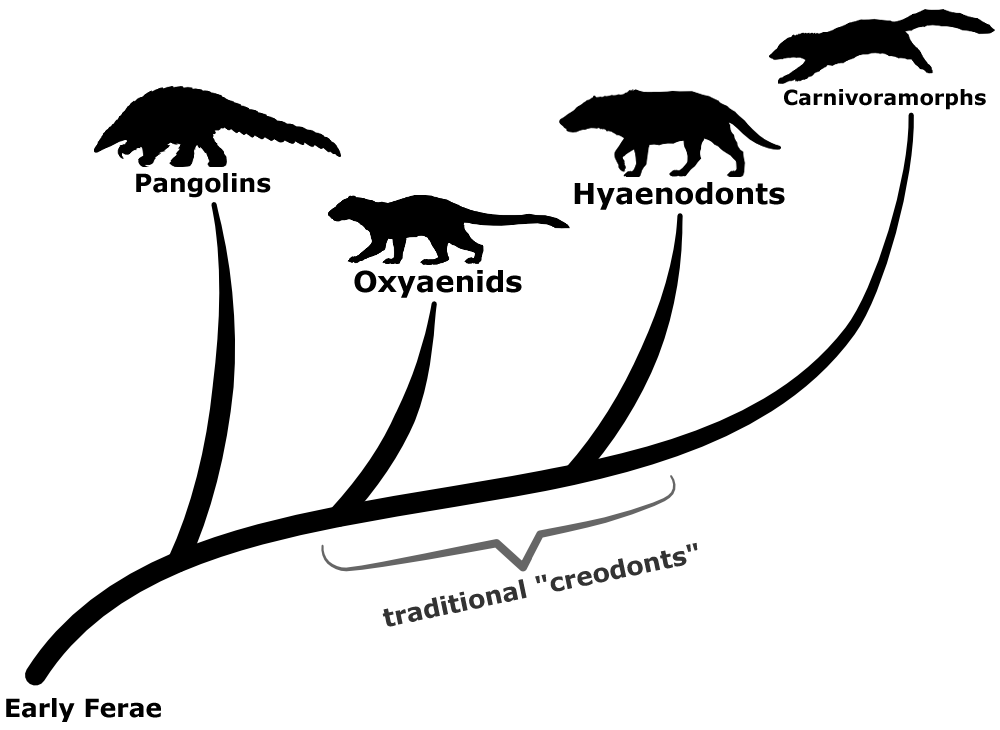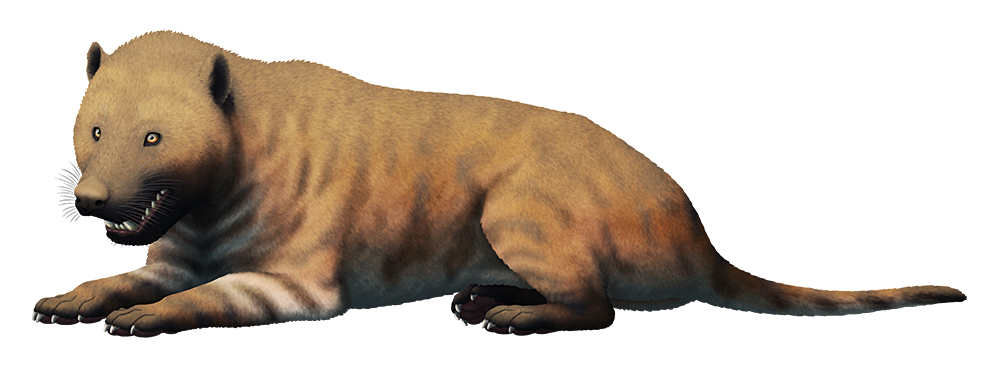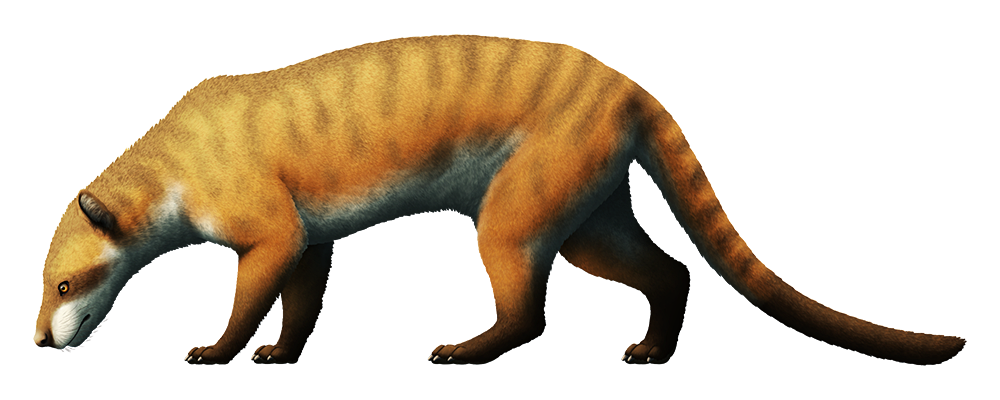Creodonts were some of the earliest predatory placental mammals to evolve after the extinction of the non-avian dinosaurs, first appearing in the mid-Paleocene about 60 million years ago. Represented by two main lineages – the oxyaenids and the hyaenodonts – they ranged across North America, Eurasia, and Africa, and were the dominant large carnivorous mammals until the end of the Eocene (~34 million years ago), with forms like Sarkastodon being some of the biggest mammalian land predators of all time.
After that point they started to decline over most of their range, gradually being replaced by early carnivorans – but the hyaenodonts retained their dominance for a while longer in Africa, diversifying during the Oligocene and early Miocene and producing more giant apex predators. The last known representatives of these animals survived in Asia until the late Miocene, just 9 million years ago, ending an impressive run that had lasted for most of the Cenozoic.
This grouping was originally named in the 1870s to encompass just the oxyaenids and Didymictis (a genus now considered to be a viverravid). Just a few years later hyaenodonts, miacids, arctocyonids, leptictids, and mesonychids were all lumped in, too – and at one point creodonts were even a part of the massive insectivoran mess before instead being classified as ancestors of the carnivorans.
During the first half of the 20th century creodonts were recognized as actually being a loose collection of mostly-unrelated mammals, and over the next few decades various groups were gradually removed and reassigned to other parts of the mammal family tree. Towards the end of the century most of the creodont wastebasket had been cleared, and just the oxyaenids and the hyaenodonts were left as two branches of one seemingly distinct creodont lineage.

…But their evolutionary relationships were still a problem.
They’d been traditionally considered to be early carnivorans, but although they had flesh-slicing carnassials the creodonts’ versions of these teeth weren’t quite right. Different teeth in their jaws had been specialized for this function compared to those of true carnivorans – with oxyaenids and hyaenodonts having slightly different arrangements compared to each other, too – suggesting a lot of convergent evolution rather than shared ancestry.
By the 1990s it wasn’t clear anymore if the oxyaenids and hyaenodonts were even closely related to each other, or what type of mammal they actually were.
But over the last couple of decades the consensus seems to have become that creodonts weren’t a single natural group, but that they were still related to carnivorans – oxyaenids and hyaenodonts were actually two separate offshoots of the Ferae, forming an evolutionary grade of stem lineages between pangolins and the carnivoramorphs.







